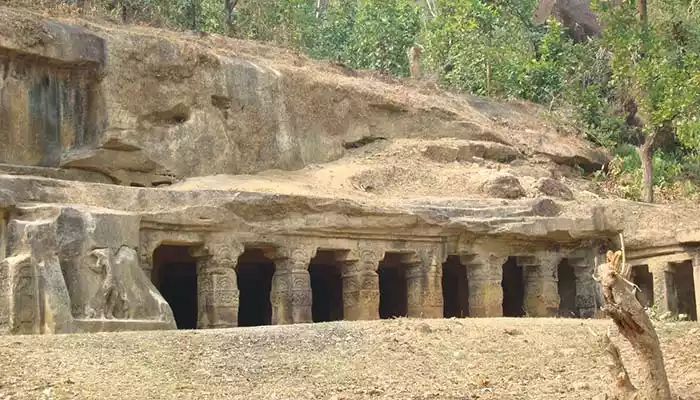Comprehensive Guide to Singrauli District
Introduction
Singrauli, often referred to as the energy capital of India, is a district in the northeastern part of Madhya Pradesh. This region, with its rich natural resources, has emerged as a crucial hub for India's energy production. Beyond its industrial significance, Singrauli boasts a rich cultural heritage, diverse geography, and a unique blend of historical influences. This guide provides an in-depth look into the district, encompassing its demographics, culture, geography, cuisines, history, notable figures, and administrative setup.
Demography
Singrauli's population is a vibrant mix of various ethnicities and communities. According to the 2011 Census of India, the district has a population of approximately 1.18 million people. The sex ratio stands at 918 females for every 1000 males, reflecting a slightly male-dominated demography. The literacy rate is around 62%, with significant efforts underway to improve educational outreach and infrastructure.
Population Distribution
Singrauli's population is predominantly rural, with around 80% residing in villages. The urban areas, particularly the towns of Singrauli and Waidhan, are growing rapidly due to industrialization and migration.
Cultural Heritage
The cultural fabric of Singrauli is a tapestry of traditional practices, festivals, music, and dance forms. The district is home to several tribes, including the Gond, Baiga, and Kol, each contributing to the region's rich cultural mosaic.
Festivals and Traditions
Festivals in Singrauli are celebrated with great fervor. Major festivals include Diwali, Holi, Dussehra, and local tribal festivals like Karma and Madai. These events are marked by vibrant processions, folk dances, and communal feasts.
Music and Dance
Folk music and dance are integral to Singrauli's cultural identity. Traditional dances like Karma, Saila, and Reena are performed during festivals and community gatherings, often accompanied by instruments like the dholak, harmonium, and flute.
Geography
Singrauli is characterized by a varied landscape that includes lush forests, rolling hills, and expansive coalfields. The district spans an area of approximately 5,672 square kilometers, with an average elevation of 376 meters above sea level.
Climate
The climate of Singrauli is tropical, with three distinct seasons: summer, monsoon, and winter. Summers (March to June) are hot and dry, with temperatures often soaring above 40°C. The monsoon season (July to September) brings substantial rainfall, essential for the region's agriculture. Winters (November to February) are mild, with temperatures ranging from 10°C to 25°C.
Natural Resources
Singrauli is rich in minerals, particularly coal, which has led to the establishment of several large-scale power projects. The district also has significant deposits of bauxite and limestone, contributing to its industrial economy.
Cuisines
The culinary landscape of Singrauli reflects its diverse cultural influences. Traditional cuisine includes a variety of vegetarian and non-vegetarian dishes, often prepared with locally sourced ingredients.
Staple Foods
Staple foods in Singrauli include rice, wheat, and maize, supplemented by pulses and vegetables. Commonly prepared dishes include dal (lentil soup), roti (flatbread), and various curries.
Local Specialties
Local specialties feature unique flavors and traditional cooking methods. Popular dishes include Bhutte ka Kees (grated corn), Bafla (wheat cakes), and Poha (flattened rice). The use of spices like turmeric, cumin, and coriander is prevalent, adding a distinctive taste to the food.
History
Singrauli's history is a blend of ancient traditions and modern developments. The region has been inhabited since prehistoric times, with archaeological evidence pointing to early human settlements.
Ancient and Medieval Periods
During the ancient and medieval periods, Singrauli was part of various kingdoms and empires, including the Mauryas and the Guptas. The region's strategic location made it a significant center for trade and cultural exchange.
Modern Era
In the modern era, Singrauli has transformed into an industrial powerhouse. The discovery of rich coal deposits in the 20th century marked a turning point, leading to the establishment of numerous power plants and mining operations.
Notable Figures
Singrauli has produced several notable figures who have contributed to various fields such as literature, politics, and social work.
Poets and Authors
Among the literary figures, Thakur Ranmat Singh stands out as a prominent poet whose works reflect the socio-cultural ethos of the region. His poetry, written in the local dialect, resonates with the experiences and aspirations of the people of Singrauli.
Political Leaders
Singrauli has also been home to influential political leaders who have played crucial roles in the region's development. Their efforts have been instrumental in addressing local issues and advocating for the district's interests at the state and national levels.
Administration
The administrative framework of Singrauli is designed to facilitate effective governance and development. The district is divided into three tehsils: Singrauli, Chitrangi, and Deosar, each administered by a Sub-Divisional Magistrate.
Local Governance
Local governance in Singrauli is managed by Panchayati Raj institutions in rural areas and municipal bodies in urban centers. These institutions are responsible for implementing development programs, maintaining infrastructure, and providing essential services.
Development Initiatives
Several development initiatives are underway to improve the living standards in Singrauli. These include projects aimed at enhancing education, healthcare, sanitation, and infrastructure. The government, along with various NGOs, is actively involved in these efforts.
Suggested Diagram
To better understand the administrative divisions of Singrauli, a mermaid diagram is provided below:
Conclusion
Singrauli is a district that embodies a unique blend of traditional heritage and modern industrialization. Its rich cultural tapestry, diverse geography, and significant contributions to India's energy sector make it a fascinating region to explore. As Singrauli continues to develop, efforts to preserve its cultural and natural heritage remain crucial, ensuring that future generations can appreciate and build upon its legacy.
